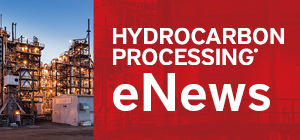Hydrotreating
Refineries’ pandemic turmoil—KNPC’s gasoline demand: Opportunities and challenges
The COVID-19 pandemic is regarded as one of the most exceedingly difficult challenges faced in the oil and gas industry's history.
Implement innovative corrosion management solutions for biofuel refining—Part 1
The production of carbon-neutral and renewable transportation fuels is growing rapidly, driven by the need to find feedstocks beyond fossil resources.
Digital Exclusive: Refineries’ pandemic turmoil—KNPC’s gasoline demand: Opportunities and challenges
In this exclusive digital article, KNPC provides a comprehensive analysis of the difficulties and challenges that the company experienced during the COVID-19 epidemic and how its refineries adapted during this challenging time.
FCC and HDS feed flexibility and integration with the delayed coker in the Izmit refinery
Operational flexibility is one of the key parameters that leads to success and sustainability in refinery production.
Critical considerations for retrofit designing a platformer reactor’s partial bypass piping in a NHT plant
The naphtha hydrotreater/continuous catalyst regeneration (NHT/CCR) platformer produces reformate to be utilized as a blending stock in the gasoline pool (FIG. 1).
Business Trends: The journey to sustainable profitability: How to benchmark the efficiency of your investment
Because it provides the energy and materials required for global development, the refining industry is critical to the world economy.
Lummus acquires water and wastewater treatment technologies from Siemens Energy
Lummus Technology announced that it has reached an agreement with Siemens Energy to acquire assets from their water solutions portfolio including intellectual property and copyrights, trade secrets, and research and development properties. The technologies address water and wastewater needs of the oil and gas industry using carbon adsorption, biological treatment and hydrothermal processes.
Ketjen introduces state-of-the-art QUASAR Platform
Ketjen Corporation, a leader in catalyst and specialty chemicals manufacturing, today announced the commercial availability of its next generation QUASAR platform, with diverse hydrotreating applications for the production of clean transportation fuels.
ART adjusts pricing to reflect higher input costs
ART, the joint venture of U.S. specialty chemicals and materials company Grace and Chevron announced global price increases for its hydroprocessing catalysts amid rapidly rising raw materials and energy costs.
Implement advanced level control techniques to improve crude distillation unit stabilizer performance
The performance of refinery operations depends on the stable operation of the plant.

- NAPCOR releases 2024 PET recycling report highlighting system efficiency gains and continued strength of PET circularity 12/12
- OQ courts other partners for petrochemical complex in Oman as SABIC drops out 12/12
- Brazil's BNDES approves $71 MM for carbon storage project 12/12
- Cuba on edge as U.S. seizure of oil tanker puts supply at risk 12/12
- China oil demand to plateau between 2025 and 2030 12/12
- Germany's PCK refinery says no impact from pipeline leak 12/12




